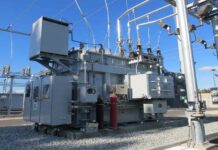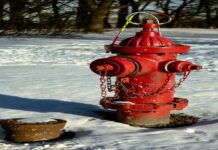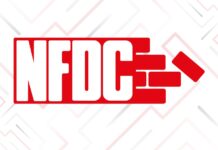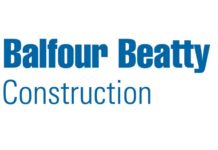Do you need to understand the essential elements of a quality guard rail kit?
Guard rail kits function as crucial safety systems designed to protect lives and assets in multiple environments. These protective barriers shield warehouses and highways from accidents while saving lives every day.
When you learn about guard rail kit components you can decide which safety system best suits your requirements.
What you’ll uncover:
- What Are Guard Rail Kits?
- Essential Guard Rail Components
- Types of Guard Rail Materials
- How to Choose the Right Guard Rail Kit
- Installation and Maintenance Tips
What Are Guard Rail Kits?
Guard rail kits function as comprehensive safety barrier systems which protect industrial sites and transportation areas from accidents.
Modular systems contain all necessary components to build a protective barrier which both absorbs impact forces and directs them away from people and protected areas.
Guard rails work nonstop to protect thousands of workers and drivers as well as pedestrians from possible injuries. Industrial environments benefit from guard rails through equipment protection and establishment of secure paths for movement. They ensure vehicles stay off dangerous routes when traveling on roads.
Essential Guard Rail Components
All effective guardrail systems consist of several key components working together to create a reliable safety barrier. Knowledge of these parts enables you to evaluate both quality and functionality during your system selection process.
The following primary components form the majority of guard rail kits:
Posts
The guard rail system depends on posts which serve as vertical support structures to anchor the entire setup. Posts form the initial installation step and serve as the base structure for all remaining guard rail components. Quality posts should:
- Be made from durable, high-strength materials
- Make sure that the guard rail system features anchoring systems that suit your specific installation surface.
- Have appropriate height for your protection needs
- Include pre-drilled holes for rail attachment
Guard rail performance depends on maintaining proper spacing between the posts. Systems typically need posts installed at intervals of 4 to 8 feet based on anticipated impact forces.
Rails
The rails serve as horizontal connectors between posts and form the physical barrier. Rails serve as the most apparent elements of the system and exist in multiple profiles based on their application needs.
- Corrugated W-beam rails (common in highway applications)
- Flat-panel rails (popular in industrial settings)
- Box-beam rails (used in high-impact areas)
- Cable rails (flexible systems for specific applications)
End Terminals and Caps
End terminals fulfill an essential safety role by correctly terminating guard rail runs. These specialized components:
- Prevent dangerous rail end exposure
- Absorb impact energy in case of collision
- Provide a finished, professional appearance
- Complete the safety system design
Fasteners and Hardware
Although hardware components in guard rail kits look insignificant they play a vital role in maintaining system integrity. Quality kits include:
- High-strength bolts and nuts
- Washers to distribute load forces
- Proper torque specifications
- Corrosion-resistant finishes
In 2023 the North American highway guard rails market reached a valuation of USD 10 billion and is forecasted to expand to USD 24 billion by 2031 while maintaining a robust CAGR of 15% throughout the period from 2024 to 2031.
Types of Guard Rail Materials
This information covers what you should understand about each option available.
Steel
Steel stands as the most popular guard rail material because of its superior blend of strength, durability and cost efficiency. Steel guard rails typically feature:
- Galvanized finishes for corrosion resistance
- High tensile strength for impact absorption
- Various thickness options based on protection needs
- Long service life with proper maintenance
The average cost of steel guardrail posts stands at USD 63.87 per unit while wooden guardrail posts come in at USD 28.57 per unit. Steel posts prove to be more economically efficient by a minimum of USD 2.40 per foot and last longer in rough terrains and regions susceptible to fires.
Aluminum
Aluminum guard rails offer several advantages:
- Lightweight for easier installation
- Naturally corrosion-resistant without additional finishes
- Clean, modern appearance
- No rusting or staining of surrounding surfaces
Plastic and Polymer
Certain guard rail applications are now more frequently using modern engineered plastics and polymers.
- Highly visible colors for improved safety
- No corrosion concerns
- Lower maintenance requirements
- Good performance in corrosive environments
The guard rail padding market achieved a valuation of USD 491.9 million in 2023 and analysts predict it will increase to USD 774.51 million by 2030 with a CAGR of 6.7%.
Concrete
Concrete barriers represent another important category:
- Maximum impact resistance
- Permanent installation option
- Lower maintenance needs
- Effective for high-security areas
Metal guardrails tend to have higher maintenance costs than concrete barriers which makes the latter more economical for roads with heavy traffic and high crash risks.
How to Choose the Right Guard Rail Kit
The selection process for a guard rail kit demands thorough evaluation of multiple factors.
Determine Required Protection Level
Begin by identifying both the protected asset and the potential threats. Consider:
- Does the guard rail need to stop vehicles from moving forward? What size and speed?
- Is it primarily for pedestrian guidance?
- The guard rail system must protect valuable equipment and secure dangerous zones.
- What regulatory standards must be met?
The U.S. railing market reached USD 6.6 billion in 2023 and will grow at a 4.5% CAGR until 2030. Investments in residential and non-residential building projects combined with urbanization trends and advances in materials fuel market growth.
Evaluate Installation Environment
The location where you install a guard rail system influences several factors in choosing the right guard rail.
- Indoor vs. outdoor installation
- Exposure to chemicals or corrosive elements
- Temperature extremes
- Surface material for mounting (concrete, asphalt, etc.)
Consider Visibility Requirements
Effective safety requires consideration of visibility factors.
- High-visibility colors for specific applications
- Reflective elements for low-light conditions
- Height appropriate for intended visibility
- Compatible with additional warning signage
Installation and Maintenance Tips
Proper installation along with routine maintenance guarantees the best performance from your guard rail kit.
Professional Installation Considerations
Achieving optimal performance depends on adhering to these installation best practices.
- Follow manufacturer specifications precisely
- Use proper anchoring systems for your surface
- Maintain correct post spacing
- Torque all fasteners to specified values
Regular Inspection Routine
Develop a regular inspection schedule that includes:
- Checking for damage or deformation
- Verifying all fasteners remain tight
- Looking for signs of corrosion or wear
- Documenting inspection results
Maintenance Procedures
Guard rail longevity and effectiveness improve through proper maintenance practices.
- Clean regularly to remove dirt and debris
- Touch up damaged finishes promptly
- Replace damaged components immediately
- Re-torque fasteners as needed
Traditional safety measure changes face resistance while padding solutions require maintenance and supply chain disruptions continue to occur alongside compatibility issues among different guard rail types.
Final Safety Takeaways
Guard rail kits deliver crucial protection across various settings because their components form an integrated system through precise design. Every component including sturdy posts and shock-absorbent rails performs unique functions to establish an efficient safety fence.
Knowledge of each guard rail component and its role enables you to choose the most appropriate guard rail system for your requirements while ensuring effective maintenance procedures and timely component replacement or updates.
Different materials provide distinct advantages regarding their strength characteristics along with maintenance needs and lifespan. Steel stands as the preferred material choice due to its superior properties while other materials like aluminum, concrete, and modern polymers serve distinct purposes in particular settings.
Your guard rail system will deliver dependable protection for people, property, and equipment over many years when you choose the right system and ensure it is installed and maintained correctly.




























